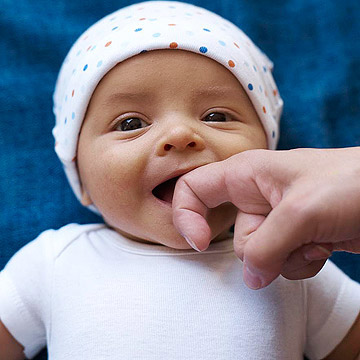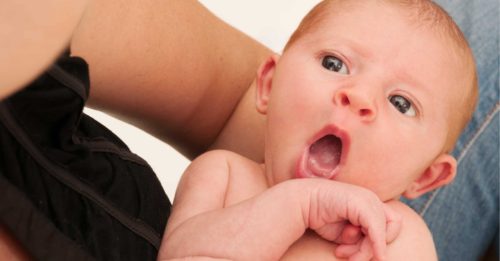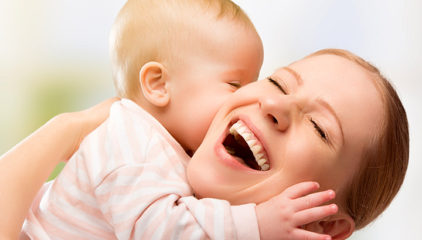Here Are Some Baby Cues You Need To Know About In Order To Keep Your Little One’s Happy
It’s only been a day you have become parents, and your little one already has a truckload of newborn baby gifts. Do you feel happy? Well, not so much maybe, because your baby stays frowned upon almost at all times. Do her frowns mean anything, or are they involuntary? You need the answer!
Being a new parent can be frustrating because you aren’t sure what your baby needs. Is a soft, whining sound a sign that your baby is having trouble with her diaper? A loud screech might be a sign of trouble. What does it mean if your baby rubs her ears or flails her arms? And does her incessant crying imply a health problem?
There are so many questions, and there are no answers. After all, your baby can’t speak! But thankfully, experts have thoroughly studied infants’ behavior and come up with answers to these and other similar questions.
Experts say babies learn to communicate well before they speak their first words. Babies are born with the ability to express many emotions, including sadness and contentment. Note that babies feel more secure when you listen to them and respond quickly to their needs. This also strengthens the parent-child bond.
But then, it is not always easy to be in tune with your baby. What makes this even more difficult is that not all babies communicate the same way, and it can take months before you feel fully at ease. These are some principles that you can apply to decode baby cues. Read on:
Facial Expressions
Those little frowns and wrinkled foreheads can be quite confusing. It’s simply not possible to assess the mood of a baby based on their facial expressions because they are often subtler than crying. However, if you practice paying close attention, you will make yourself pretty familiar with these expressions. This will eventually help you link those expressions with certain emotions. Nonetheless, here are some ready tips until you learn from your own experience.
Gaze Aversion
If your baby turns her head away from you, it is time to take a break from eye contact. Babies begin to disconnect around two months of age, especially when they feel overwhelmed or overstimulated. Sometimes, the baby will turn her back almost stubbornly, play with her fingers and toes, or start crying—anything that would break contact with the adult.
What you can do
New parents can sometimes become too enthusiastic about their baby’s interaction. They may try to come in the baby’s range of sight even though she is not looking. Some even keep tickling, talking, or jostling their baby to get her attention. Respect your baby’s need to be quiet and patient until she comes back to you. Once she comes back, smiles broadly and reengages with your child.
Smiling
The first real smile is usually between six and eight weeks. Smiles at this age are likely to indicate physical contentment, such as the warmth of a towel. However, soon smiles will become more controlled and occur when the baby is with her loved ones.
What you can do
Encourage your baby to smile. When she smiles at you, smile back at her and tell her how great she is. No, she won’t understand your words, but she has her own ways of sensing love.
Copying
Babies start imitating facial expressions such as those of sadness, surprise, and fear between 3 and 6 months. By the time a baby is 9 months old, she learns to take in new situations. For instance, when a stranger suddenly appears in front of a baby. She first looks at the stranger and then at her mother. If the baby finds the mother’s face in a state of distress, then she begins to feel more anxious. Often babies start crying or clinging to their parents when something like that happens.
What you can do
Your baby will feel stressed to see you stressed. To ease anxiety, you can take deep cleansing breaths and relax your facial muscles. If you want to calm down the baby, just smile. In many cases, the act of smiling calms both the mother and the baby down. Never hug or pat your baby if you reach a point where you are visibly angry or frustrated. If you are alone, you can put your baby down in a safe area like her crib until you feel calmer.
Communicating with Body Movements
Studies show that around 90 percent of communication between babies and adults is nonverbal. Many babies will make tiny fists to signal hunger until they get the food. Once they feel satisfied, their hands will relax and open. Here, we talk about some other body movements and what they mean.
Baby Arching Her Back
Beginning a few weeks after birth, babies start arching their backs when in discomfort. It could indicate reflux, particularly if the arching is accompanied by crying. The baby will move and squirm to find a comfortable position. Sometimes, babies will arch their backs after eating and then move away from the breast. This movement may be a sign that your baby is trying out to roll over.
What you can do
Most likely, your baby just needs to be moved. You can take your baby out in a stroller, carrier, or maybe even your car for a few moments. Hold her up against your shoulder or let her wiggle on the ground.
Rubbing the eyes and/or ears
Babies will rub their eyes with their hands if they feel tired. Babies rub their faces against something when they feel tired or itchy. And this happens before 6 months. They might accidentally discover their ears and find it comforting to pull or rub them. Babies love to feel their ears.
What you can do
Begin her bedtime and naptime routines as soon as your baby starts to rub her ears or face. But there is something else that you should be concerned about. Experts say if a baby rubs her ears, is fussy, or has a temperature above 101 degrees, parents should contact a pediatrician. This is a helpful cue to keep an eye out for when guests are pouring in. When people bring gifts for babies, they often interact with them. As a result, they feel tired. If you notice your baby rubbing her eyes, put her to sleep, and politely ask your guests not to enter the baby’s room.
Rooting
Rooting reflexes are vital for survival. They help the baby locate food. A newborn will always turn her head when something touches her cheek. But this reflex fades in the first few weeks. However, babies still turn their heads toward you when it’s time for nursing. They now use it as a sign that they are hungry.
What you can do
You can use the rooting reflex to your advantage when your baby is learning how to feed. A simple touch on the cheek will help her locate the breast or the bottle.
It’s worth noting here that the cues listed in the article are not the only ones that babies make. There are others too. But since the list covers all the common signs, it will prove extremely helpful.
The next time you need to pick a gift for a newborn, buy newborn checklist and baby essentials online from babies bloom. And tell the mother you have a better gift for her— a guide on what all those tiny expressions on her baby’s face mean!













